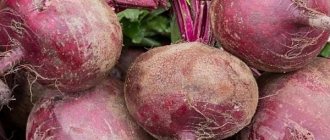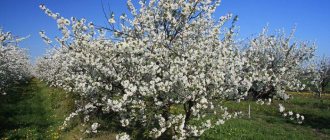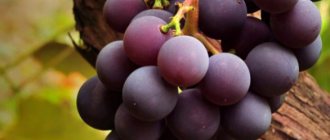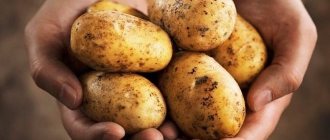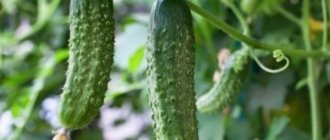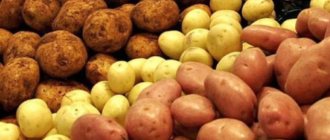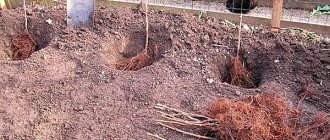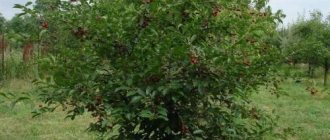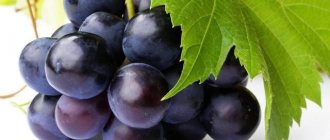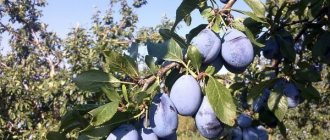How to choose the right cherry variety for Siberia
Cherry trees were not previously grown in Siberia because the climate was too cold. And only in recent decades, thanks to the efforts of breeders, frost-resistant varieties of this stone fruit crop have been developed, which can be grown in many areas of the Siberian region.
Caring for cherries in Siberia - video
When choosing cherry trees for growing in Siberia, you need to choose frost-resistant, early-ripening varieties that have high immunity to the main diseases that affect this stone fruit.
In order for cherries to grow and bear fruit in this region, it is not enough to choose the right variety; you also need to follow some rules for growing them:
- this stone fruit crop is cross-pollinated, so it is necessary to plant several cherry trees nearby with the same flowering period from the same biological group;
- the area for this fruit crop must be illuminated, protected from cold winds and without stagnant moisture in the soil;
- cherry loves light soils with a slightly alkaline or neutral pH;
- this crop is resistant to drought and does not tolerate long periods of waterlogging;
- in Siberia, this stone fruit crop may not bear fruit every season.
Climatic characteristics of the region
The climatic features of this region are quite harsh. At the same time, there are certain differences between the weather conditions of Western and Eastern Siberia. The climate in the south and north of the Urals differs.
However, all parts of the region experience cold winters and short summers. Frosts are common in spring and autumn. Therefore, when choosing cherry varieties, you should give preference to early-fruiting and frost-resistant varieties. Breeders are constantly developing new types of trees, which helps grow berries even in such difficult conditions.
There are three types of cherry varieties:
- Self-fertile varieties - during the pollination process they use pollen from only their own flowers without pollinators (for example, bees or related trees growing in the neighborhood). If a cherry of a pollinating variety is not adjacent to a self-fertile cherry, then fruiting will be only 4%.
- Partially self-fertile cherries are an intermediate species between self-fertile and self-fertile. They bear fruit better when several trees of the same crop grow nearby.
- Self-fertile - during pollination they use only their own pollen, therefore they are able to self-pollinate.
Self-fertile cherry varieties for Siberia
Of all the varieties of self-fertile cherries, only those with high resistance to frost can be grown in Siberian conditions. The following such fruit trees should be noted.
Cocomycosis on cherries - video
Bessey's steppe cherry
This variety is native to the North American prairies. This variety has great frost resistance (up to -50 degrees Celsius), unpretentiousness to growing conditions and care, self-fertility and early fruitfulness.
The Bessey cherry bears fruit every year; after ripening, its fruits can hang on the tree for up to 30 days without falling off.
Interesting article:
Cherry varieties for the Moscow region
Cherry Desired
Desired - entered into the State Register of Russia at the end of the last century. The bush is self-fertile, low (up to 1.5 m in height). It is a medium-late variety in terms of berry ripening time. Zhelannaya’s resistance to cold is much higher than average, resistance to major diseases is average, and resistance
to coccomycosis is low.
Abundant Cherry
It was entered into the State Register in 1992. Productivity from one tree is up to 11-11.5 kg. Flowering and ripening of berries are later.
These bushes, up to 1.5 m high, are highly resistant to frost.
Izobilnaya cherry has resistance to coccomycosis - slightly above average.
Seliverstovskaya cherry
It was entered into the State Register at the beginning of 2004.
The shoots of these tree-like bushes of this cherry tree grow up to 1.8-1.9 m, the crown is drooping.
This variety is characterized by: self-fertility, high resistance to cold and average resistance to coccomycosis. Flowering and ripening of berries are average.
Care
Due to the rather harsh growing conditions, cherries need to be properly cared for. Fruit trees need timely pruning and crown formation, fertilizing, and treatment against diseases and pests. In Siberian conditions, it is especially important to pay attention to insulating the plant in the winter. When and how to prune cherry trees correctly, read here.
Pruning and crown formation
Young fruit trees need formative pruning of the crown, which is carried out in the first years after planting. The procedure is carried out in the fall after most of the leaves have fallen and sap flow in the plant has stopped. In the spring, sanitary pruning is required, during which damaged shoots are removed from the cherry tree. It is carried out in April until the buds open. In bush species, all shoots located near the ground are cut out.
The height of the cherry tree trunk should be 30-40 cm.
Feeding
A young plant requires timely feeding for good growth and development. Initially, fertilizer is placed in the planting hole, thanks to which the cherries will have all the necessary nutrients. For the first three years, you should not use fertilizers. Among mineral fertilizers, potassium and phosphorus fertilizers are often used. There is no need to overdo it with nitrogen-containing fertilizers (manure, urea, saltpeter), especially in young plants, as they can cause more harm than good. Even with high drought resistance, trees need to be watered regularly, especially during fruit ripening.
Insulation
To protect cherries from return frosts, it is advisable to plant them on slopes. This arrangement will protect the tree from the cold.
After completing all the autumn procedures, the root system and trunk of the cherry tree are covered with spruce branches. This increases the plant’s chances of surviving the harsh Siberian frosts.
Diseases and pests in Siberia
Due to unusual growing conditions, cherry trees are often susceptible to fungal diseases, the main ones of which are coccomycosis and moniliosis. Coccomycosis affects the leaf part of the tree, but without treatment it can spread to the stem of the plant. The following drugs are used for treatment:
- Speed - 2 ml per 10 liters of water;
- Horus - 4 g per 10 liters of water.
Treatments are carried out at intervals of 7–10 days, with contaminated parts collected and destroyed. 1-3% Bordeaux mixture or a solution of the drug “Horus” -3.5 g per 10 liters of water helps fight moniliosis.
The most common cherry pests in Siberia are leaf aphids, brown fruit mites, and cherry flies. Drugs such as Karbofos, Actellik, and Ambush help fight the cherry fly. For preventive summer treatment, solutions based on Fufanon or copper oxychloride are suitable.
This material will tell you how to treat cherry coccomycosis.
Frost-resistant and winter-hardy cherry varieties for Siberia
The main criterion by which cherry varieties are selected for cultivation in the Siberian regions is their resistance to frost. The most frost-resistant cherry varieties for Siberia are listed below.
EXCELLENT CHERRY VARIETIES!
Cherry Zhukovskaya Cherry Lyubskaya Cherry Shokoladnitsa
Cherry Vladimirka
This is a medium-sized tree. Vladimirka is characterized by a high level of frost resistance and unpretentiousness to growing conditions.
The yield of the variety is average, up to 9-11 kg of cherries per tree.
Novodvorskaya cherry
It can easily tolerate severe cold and is not afraid of spring return frosts.
The big disadvantage of this fruit crop is its poor resistance to coccomycosis.
Frost-resistant cherry variety Wreath
This is a compact miniature variety with high frost resistance, tasty and juicy berries and small seeds.
Each plant can produce up to 10 kg of fruit. But fruiting in the Siberian region is unstable; dormant seasons may occur.
Cherry Star
Frost-resistant, but not entirely self-fertile variety. For complete pollination, the presence of nearby cherry varieties with the same flowering period is required.
From one Zvezdochka tree you can collect up to 13-14 kg of ripe cherries with excellent taste.
Felt cherry - varieties for Siberia
In Siberia, of all the varieties of felt cherries, only four can be grown.
Useful tips for growing felt cherries - video
[media=
https://youtu.be/8hb4Ato6W1M
]
Felt cherry variety Alice
It was bred at the end of the last century, is highly resistant to frost, and the berry ripening period is average.
Fruiting of this fruit tree begins in the 4th season after planting in a permanent place.
Alice is a self-sterile variety, so other pollinating cherry trees with a similar flowering period should be planted nearby.
The weight of ripe Alice cherries is up to 2.9-3.1 g, the color of the fruit is dark burgundy. This cherry is characterized by average resistance to diseases.
Felt cherry Summer
This felt cherry was bred in the third quarter of the last century. It is characterized by high resistance to frost and good yield.
The weight of ripe cherries is more than 2.9-3.2 g. The color of the berries is pink.
Felt cherry Natalie
This variety was included in the State Register in the last years of the last century. The main advantages of the variety are large fruit, high annual yields and resistance to frost.
The first harvest is harvested three seasons after the seedlings are planted in a permanent place;
Autumn Virovskaya felt cherry
This variety has been known since the end of the last century, with medium-early ripening cherries, ripe fruits are of universal use.
Ripe berries weigh up to 3.1 g, their color is dark red.
The sweetest cherry varieties for Siberia
Many summer residents do not like sour cherries, so they plant only sweet varieties of these stone fruit trees in their garden. Some of these sweetest cherries that can be grown in Siberia are listed below.
Cherry Princess
A variety of felt cherries, characterized by a sweet taste and versatility of ripe fruit.
The height of the shoots is up to 1.4-1.6 m; this variety does not have overgrowth. The princess is self-sterile, so you need to plant other varieties of cherries nearby - pollinators with the same flowering period. Cold resistance is high.
Cherry Ashinskaya
It reaches a height of 2.9-3.2 m, self-fertile, so pollinating trees need not be planted nearby. The fruits are large in size, slightly flattened, weighing up to 5.2 g. The berries have practically no sour taste, so they will appeal to those with a sweet tooth.
From one plant you can collect up to 11 kg of ripe Ashinskaya cherries.
Cherry variety Vole Michurina
A very hardy variety that does not require special care and is highly resistant to cold.
Michurina's vole is a self-sterile variety, and therefore requires planting cherry pollinating trees nearby. The taste of ripe Polevka Michurina cherries is excellent; the sweet and juicy pulp will appeal to all lovers of this berry.
Subbotinskaya bush
It is highly resistant to hot, dry periods and tolerates frost well. Ripe berries are scarlet in color with juicy sweet pulp.
Varieties of the largest cherries for growing in Siberia
Many gardeners prefer to grow only large-fruited cherries in their garden plot in Siberia, since they are easier to collect and look more beautiful when prepared. The most popular among Siberian summer residents are the following large-fruited varieties.
Cherry Garland
A cherry variety with early ripening berries.
This tree can reach a height of 3.5-3.9 m. The plant requires regular pruning.
The weight of the berries is 5.9-6.0 g, the seed is large. You can clearly feel the sourness in the taste, since the acid content in the berries is up to 2% and the sugar content is up to 14%. Frost resistance – up to -32-33 degrees Celsius;
Lighthouse
A bush variety, the shoots can reach 1.8-1.9 m in height. The crown is voluminous, so seedlings of this variety are not planted close to each other. The weight of ripe berries is 5.9-6.1 g, up to 12-14 kg of tasty berries are collected from one bush;
Youth Cherry
Belongs to the mid-early varieties, the harvest ripens by mid-late July.
The height of a tree of this variety grows to 2.2-2.3 m, the crown is rounded, the ends of the shoots hang down. The weight of ripe berries is 4.4-4.8 g or more. The variety is frost-resistant and can easily tolerate temperature drops down to -28-30 g.
Memory of Enikeev
The tree is quite tall, its height can reach 2.9-3.1 m. The spherical shape of the crown is not too thick. The weight of ripe cherries reaches 4.9-5.1 g. Large cherry fruits are elongated, with juicy sweet pulp.
However, the stone is difficult to separate from the pulp even in fully ripe berries.
Cherry varieties Duke or cherry for Siberia
Duke or cherry is a hybrid obtained by crossing varieties of cherries and sweet cherries.
Currently, cherry varieties have been developed that can be grown in Siberia and the Urals - regions with harsh winters.
The most popular Dyukov varieties among Siberian summer residents are described below.
Cherry Duke Dorodnaya
A tall hybrid with large, round, dark red berries with a sour-sweet taste. The weight of Dorodnaya duka cherries is about 6-6.5 g. Fruit ripening is mid-late. Tree resistance to extreme cold is good.
Duke the Nurse
A variety with large sweet fruits, the taste of which also has a slight sourness. The tree itself and flower buds do not freeze even in severe frosts. The ripening period of Duke Kormilitsa berries is average.
Cherevishnya Beauty of the North
A variety highly resistant to frost, with good yield. The fruits are large, weighing up to 8 g, light pink in color, slightly elongated. The variety is mid-early, the berries ripen in the second ten days of July.
Cherry Duke Spartanka
Mid-season variety with good yield and smooth ripening of berries.
The weight of ripe cherries is about 6 g, the taste is good. Frost resistance is high.
What problems might you encounter?
There are many problems when growing, and it is especially difficult for a beginner to cope with them. But if you familiarize yourself with the advice of experienced summer residents, you can easily cope with any misfortune:
- The cherry tree doesn't bloom. There are several reasons, perhaps the tree is sick, or it lacks nutrients.
- Worms in berries. Special treatment is required for pests that lay eggs.
- Stopping growth. Lack of nutrients, incorrect location, insufficient watering and much more.
- Fruit drop. The reason is high acidity of the soil. By normalizing the pH, the yield increases.
- Overgrowth. A common problem for gardeners. They buy cherries that do not sprout, then this problem will disappear immediately. If the cherry is a coppice, then in early spring they find the horizontal root of the cherry and remove the shoots without leaving a stump. The log site is treated with garden varnish.
Growing cherries in the climatic conditions of Siberia and the Urals is quite possible. It is necessary to follow all the rules of planting and growing, and the plant will reward you with a harvest.
Tree or tree cherry - varieties for Siberia
Varieties of tree cherries for growing in Siberia are highly resistant to frost (up to -50 degrees Celsius),
early fruiting and good yield. Some of them need special mention.
Varieties of felt cherry (Natalie, Alisa)
They are distinguished by light pubescence of the trunk and foliage, similar to a felt covering. The varieties are self-fertile, differ in the average size of the berries and weigh about 2.9-3.1 g. In especially cold winters, the branches can be damaged by frost, so before the onset of frost it is recommended to bend the branches to the soil and secure them with metal staples. In winter, all branches are covered with snow;
Photo of cherry variety Natalie
Photo of cherry variety Alice
Cherry tree Firefly
This variety can easily tolerate cold temperatures down to -50 degrees Celsius.
The berries are round in shape, rich red in color with paler flesh, weighing up to 2.9-3.1 g. Harvesting can be done in the last ten days of July.
Tree Cherry Miracle
Miracle is a hybrid of varieties of cherry trees and sweet cherries. In especially cold winters, it is necessary to cover the trees with spruce branches. The variety is resistant to moniliosis and coccomycosis. Ripe cherries can be picked from the last ten days of June.
The berries of this hybrid are large in size and heavy in weight - up to 9-11 g. From each tree cherry you can collect up to 13-14 kg of ripe berries.
Altai swallow
This self-sterile variety requires the presence of other pollinating cherry trees nearby.
The berries have a sour-sweet taste, dark red color. The trees can reach 1.4-1.6 m in height. 4.5-5.5 kg of ripe berries are collected from each plant.
Vole Michurina
The variety was obtained by selecting steppe cherries. A distinctive feature is good tolerance of late spring frosts. Non-standard crown with drooping branches, which requires periodic checking and pruning. Otherwise, it is quite easy to care for. The berries ripen in early August. The fruits are bright red, sweet and sour, medium in size. With a small size, a fairly high degree of productivity.
The best varieties of bush cherries for Siberia
Among the best bush cherry varieties for Siberia, the most popular are those described below.
Bush cherry Mayak
The fruit of selection by Sverdlovsk specialists. These bushy plants reach a height of 1.9-2.1 m.
The first harvest is harvested 3-4 seasons after the seedlings are planted in a permanent place.
The fruits ripen gradually, the harvest period extends from the last ten days of July to the first ten days of August. From one bush you can collect up to 13-14 kg of berries.
Princess
Bush cherry Tsarevna is up to 1.6 m high, does not form shoots, is resistant to severe cold, self-sterile. The fruits are sour-sweet, round and pinkish in color.
Bush cherry Brusnitsyn
Bush type variety, shoot height can reach 1.8-1.9 m. Main advantages: self-fertility, large berries weighing up to 6 g, good taste of the fruit, good yield - up to 18-19 kg from one adult bush.
Bush cherry Standard Ural
Mature bushes reach a height of 1.9-2.1 m. The variety is self-sterile, so it is tedious to plant other varieties of cherries with a similar flowering period nearby. Large flat-round cherries have a pleasant sour-sweet taste. From each bush you can collect up to 7.8-8.5 kg of ripe cherries.
Lighthouse
The berries of this variety are characterized by excellent taste. It was thanks to them that the tree gained popularity in a short time. Small trees with a spreading crown. To prevent various types of diseases, the crown must be thinned regularly. Good care guarantees high yields. The berries are large, weighing more than 5 g, dark burgundy in color. The taste is reminiscent of cherries: very sweet with a subtle hint of sourness. The harvest is harvested in mid-summer, although the ripe berries hold tightly and do not fall off.
Cherry varieties for Siberia - reviews from gardeners
Natalya, 50 years old, Barnaul region: Several varieties of cherries grow on my plot - Sverdlovchanka, Gridnevskaya, Griot Moskovsky and Morozovka. All these cherries are short, up to about 2.3-2.4 meters in height. Therefore, they are easy to care for and easier to harvest. Fruiting at the milestones is good, the taste of the berries is excellent. All varieties tolerate our frosty winters well, even without shelter.
Svetlana, 49 years old, Biysk: I tried to grow cherries in my garden plot for many years. But there were varieties that were not very resistant to frost, so after winter the trees froze almost completely, there were no harvests, since all the flower buds froze. But several years ago I was advised to plant Maksimovskaya cherries on the plot. This variety turned out to be compact, reaching only 2.3-2.4 m in height. And the fruiting period of this cherry, as I read on the Internet, is up to 35 years. The fruits are round, sweet with a slight sourness. True, they are not stored for too long. But we quickly process the harvest - seal the compotes, make jam, partially freeze them and eat them fresh, of course.
Frost-resistant varieties of cherries - video
Olga, 58 years old, Novokuznetsk: For more than 10 years, several cherry trees of the Ashinskaya variety have been growing in my garden. They reach a height of 3 meters, are self-fertile, the yield is high - we collect up to 11-13 kg of ripe cherries from each tree. The fruits are very sweet, practically without sourness, which my grandchildren especially like.
